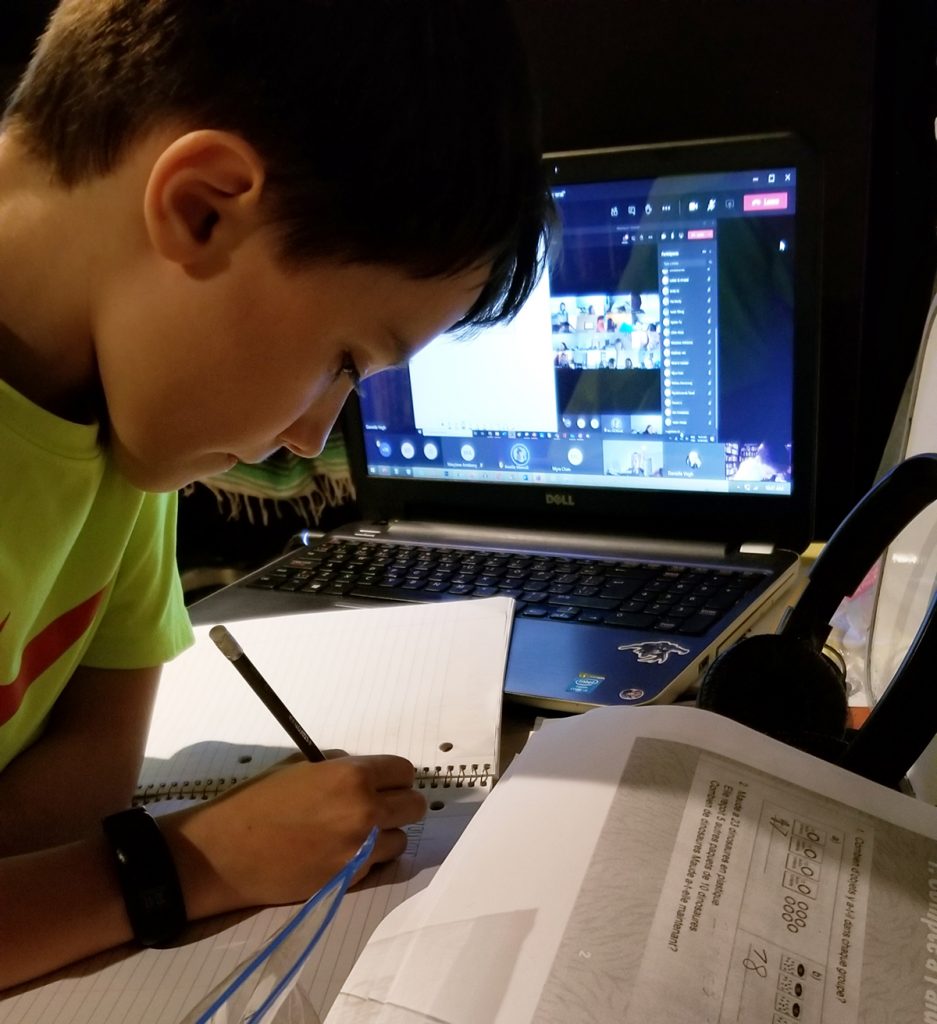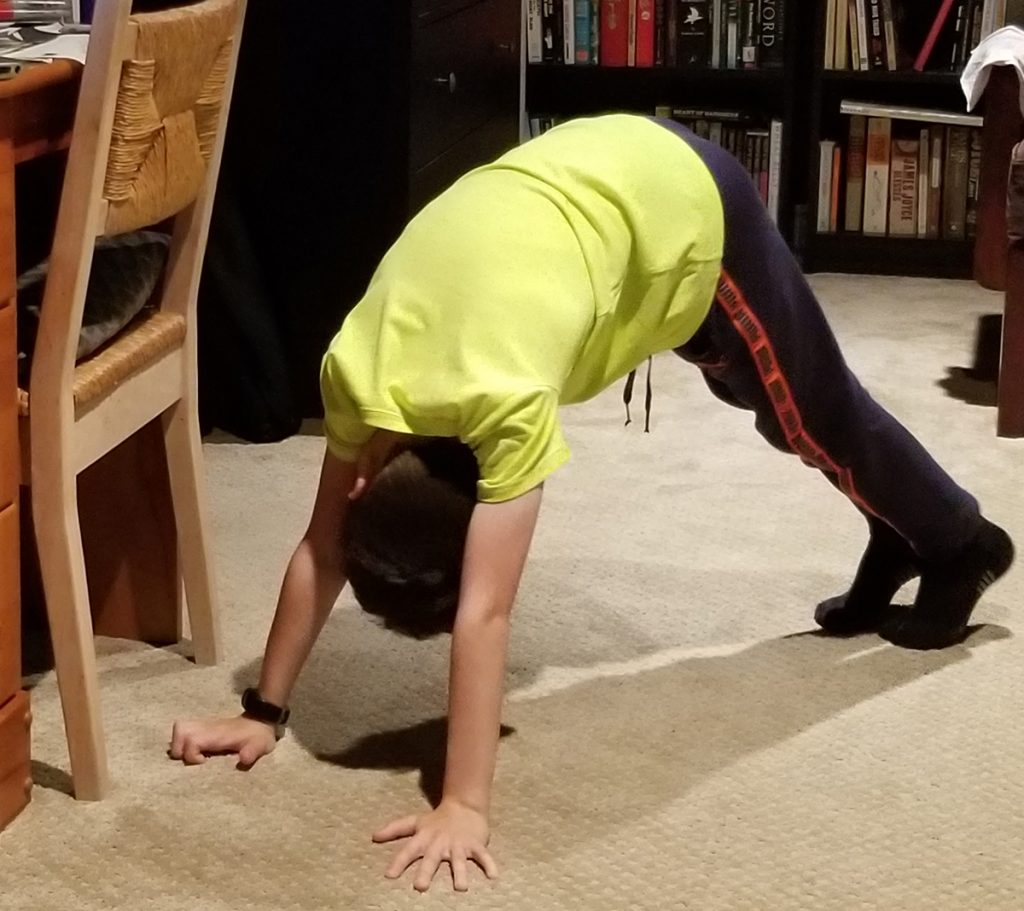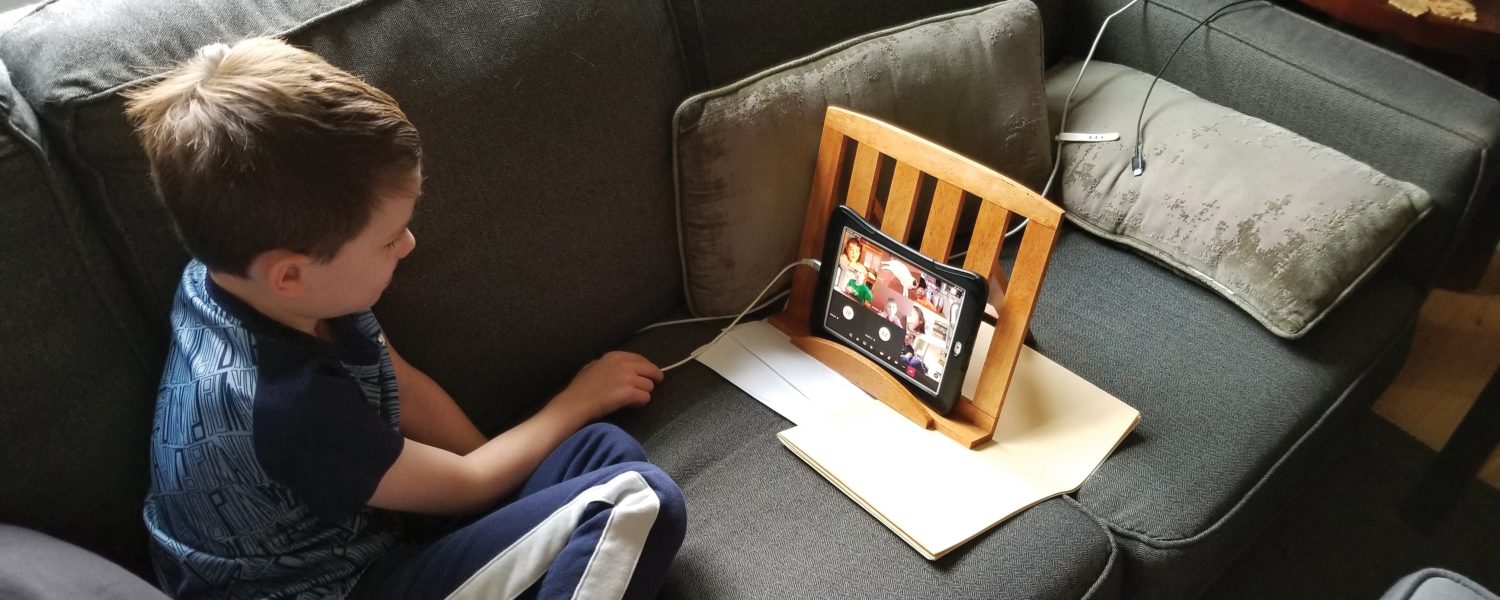Amid a Global Pandemic,
Educators Find New Ways
to Keep Kids Learning
Story/Photography by Matthew St. Amand
The school day in autumn 2020 begins as it has for generations: standing for the playing of the national anthem, followed by announcements, which include birthdays and the Joke of the Day. Except, in the George Jetson time in which we live, this all occurs in millions of homes on cell phones, tablets and laptop computers. I stand with my two young sons in our basement until the finish of “O Canada”.
With the outbreak of COVID-19, and its global spread, every facet of daily life has been altered. Education of the world’s young people has been no exception. Sidestepping the minefield of political issues and controversies, a number of positive aspects shine through: Our teachers’ commitment, tenacity and creativity in providing online learning, our school boards’ ability to shift resources and harness online platforms to facilitate this, and our childrens’ willingness to adapt to a situation everyone can agree is not optimal.
Full disclosure: my wife is a teacher with the Greater Essex County School Board and leads her Grade 6 class online from our dining room. My two elementary school-aged sons continue their French immersion learning online from home, as well. We are right in the thick of this experiment.
My observation as the spouse of a teacher and parent of two children: the experiment is going better than expected.
Would my sons prefer to be back at school, with their friends, learning in their classrooms?
Absolutely.
Would my wife prefer to be in a classroom with her students, as she has been for the past 15 years? Without a doubt.
As virtually every science fiction movie has warned humankind, we cannot rely on technology to solve our problems. The online platforms—Edsby, Microsoft Teams, Brightspace, among others—are indispensable to online learning, but each has its own learning curve that can leave even the most tech-savvy parents baffled. So, what is bridging the gap between technology and the students? Our teachers.
“It’s different helping students one-on-one because I can’t see their work as they’re doing it,” my wife, Michelle, explains. “My students are engaged. They are enjoying class. They don’t want to logout when the school day is done.” But there is no getting away from the reality of the situation.
“The kids are missing that connection with their teachers and their friends,” she says.
In these unprecedented times, our teachers, administrators and all the people behind the scenes working feverishly to make the various online platforms work, are living the United States Marines motto: “Improvise, adapt and overcome.”

“I began doing what I’ve done all these years,” Michelle explains. “Some teaching methods didn’t translate very well online.”
What is she doing differently online than in person?
“I give my students more opportunity to talk and share about themselves with each other.”
Some tried-and-true methods of teaching from the classroom translate online, such as “read-alouds”—Michelle is currently reading a novel to the kids. And kids still enjoy doing art.
“Now that they’re used to logging in each morning,” she continues, “we’re finding our routine, and I’m giving them more time to work independently. Some students really need a break from the screens, and others need me there as they work.”
The students have adapted to “the new normal”. Now, Michelle can give her students tasks—a math word problem, for example—and break them into groups. The groups convene in their own separate “channels” to work on the task. After a period, they return to the virtual classroom and share their work. “I’m teaching the kids to share their screens so that we can see what they’ve done.”
Teachers are doing more to address students’ mental health needs. “When they feel stressed,” Michelle says, “students need breaks that give them a change of scenery, going outside. I’ve also told my students that if they’re having a bad day and don’t want their camera on, they can let me know they don’t want to have it on for that day.”
Everyday, however, reality asserts itself and what’s missing is all too apparent.
“I miss my colleagues,” Michelle continues. “I miss my former students coming by to visit. I miss being in my school. Seeing the families at my school.”
She concedes that adapting what she does in the classroom for the new online format has come with a steep learning curve. “We’ve had such a short span of time to learn new technology,” she explains, “and supporting families with the new technology.”
The proof that it’s working can be found in her students’ engagement.
“They participate,” Michelle says, “they discuss ideas with each other. And they show up.” Attendance among most of her students is exceptionally good.
My sons—Cullan is eight, Ciaran is six years of age—are making the best of the situation. They login each day. They have gotten used to Microsoft Teams—the main platform for their online classes—stalling and glitching. They’ve become accustomed to pressing the button to virtually raise their hands to answer questions, unmuting their microphones to give their answers.
During music class, Cullan’s teacher plays her guitar for the students and has them keep time by clapping their hands.
Ciaran’s teacher employs a number of interactive games and videos.

At various points in the day, I’ll hear music coming from a “Just Dance” video that has the kids on their feet, dancing, moving around. Other times, I’ll hear the calm, soothing tones of a three-minute yoga routine that has the guys moving from “downward dog” pose into lunge stretches.
When asked what he enjoys most about learning online, Cullan says, “On breaks, I can pet my cat. I like Teams because if you’re a presenter, there is a button you can click to share your screen.”
Ciaran says: “Seeing my friends. We played BINGO. Sometimes we call each other after school.”
And though we’re living in these science fiction times, bumping up against the
limitations of our overhyped technology, there are many moments through the day when it all comes together. One morning, I found Michelle doing “burpees” with her students. More than once, I’ve paused while getting a refill of coffee to listen to a story she read to them about some facet of Canada’s history that I never knew about.
My sons’ teachers are just as interesting, hearing my eldest’s Grade 3 teacher talking about the origin of the Internet, students asking her if telephones existed when she was a little girl in the 1980s. During an art class, I sat off to the side, listening to a discussion about how graffiti has come to be recognized as an artform (with all the requisite warnings that kids, themselves, not run out and begin painting on public spaces).
In my youngest son’s Grade 1 class, a classmate turned his tablet around to show everyone his cat lying on the couch.
Countless human moments like this occur every day.
In the past year, the people of Ontario have learned just how important our education system is. It’s an enormous credit to all the people working to keep this colossus together and functioning that they have succeeded in doing so. Yes, we can all admit that it’s not perfect, but maybe “perfect” isn’t that great a benchmark, after all.




Add comment